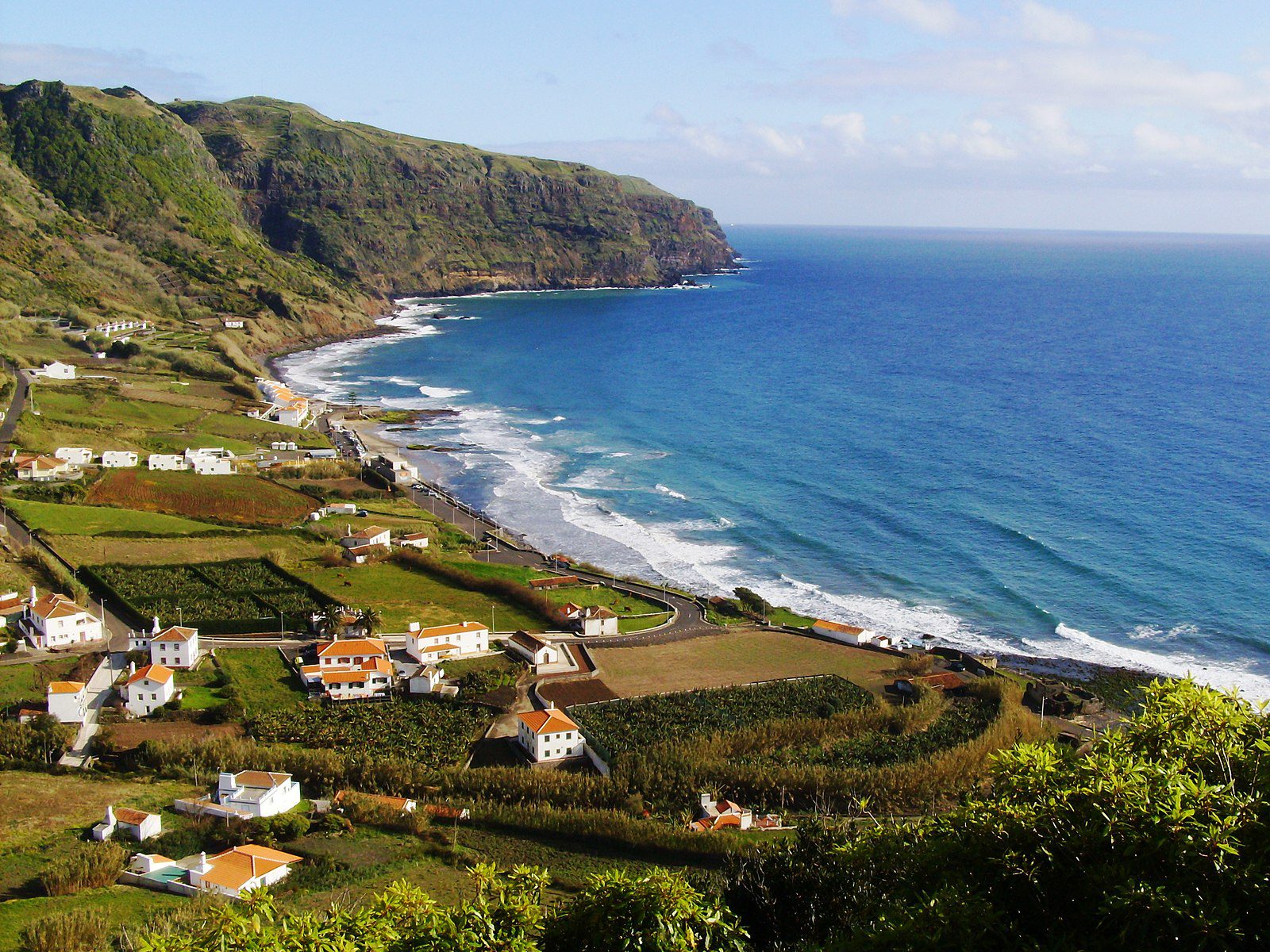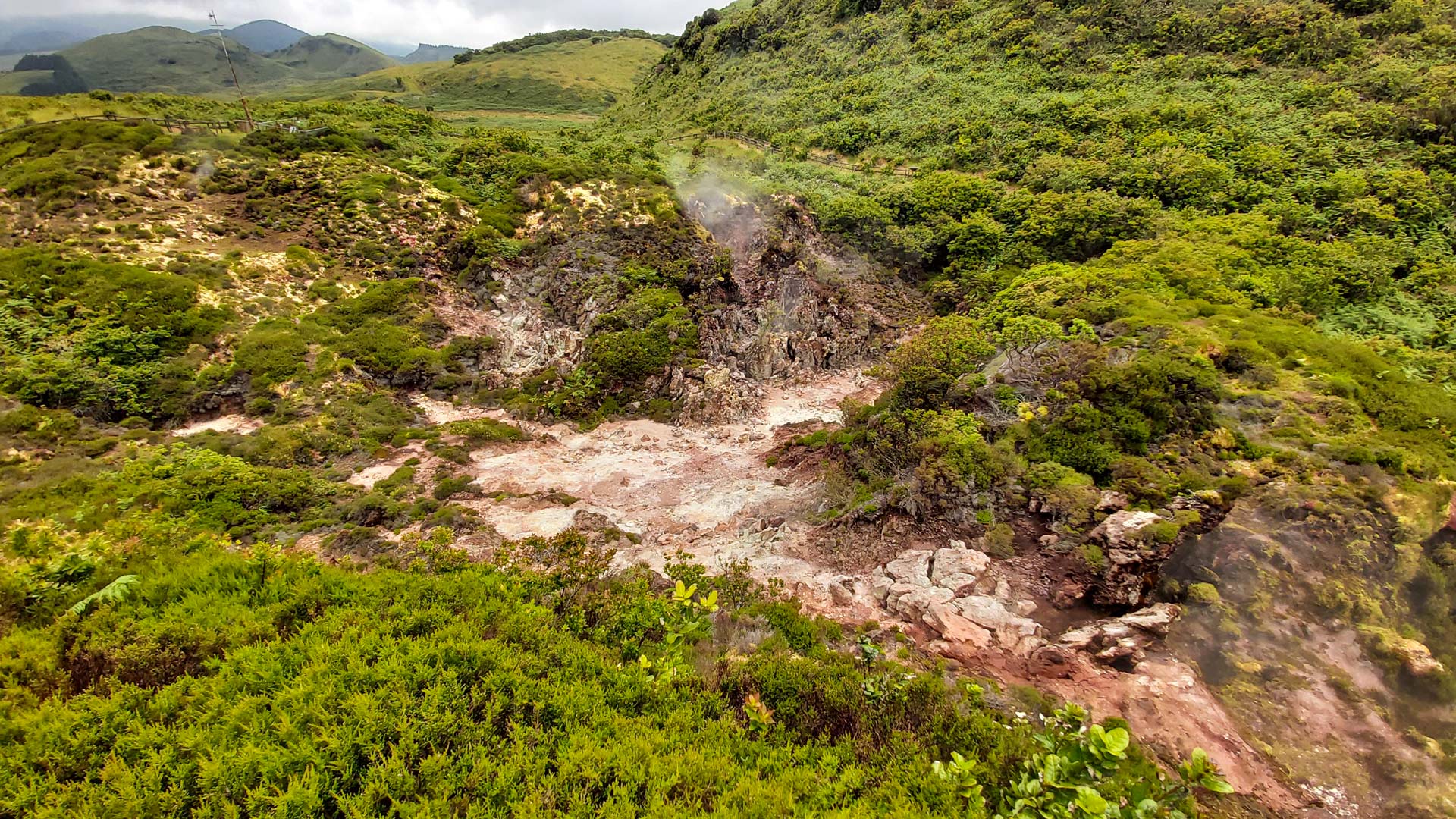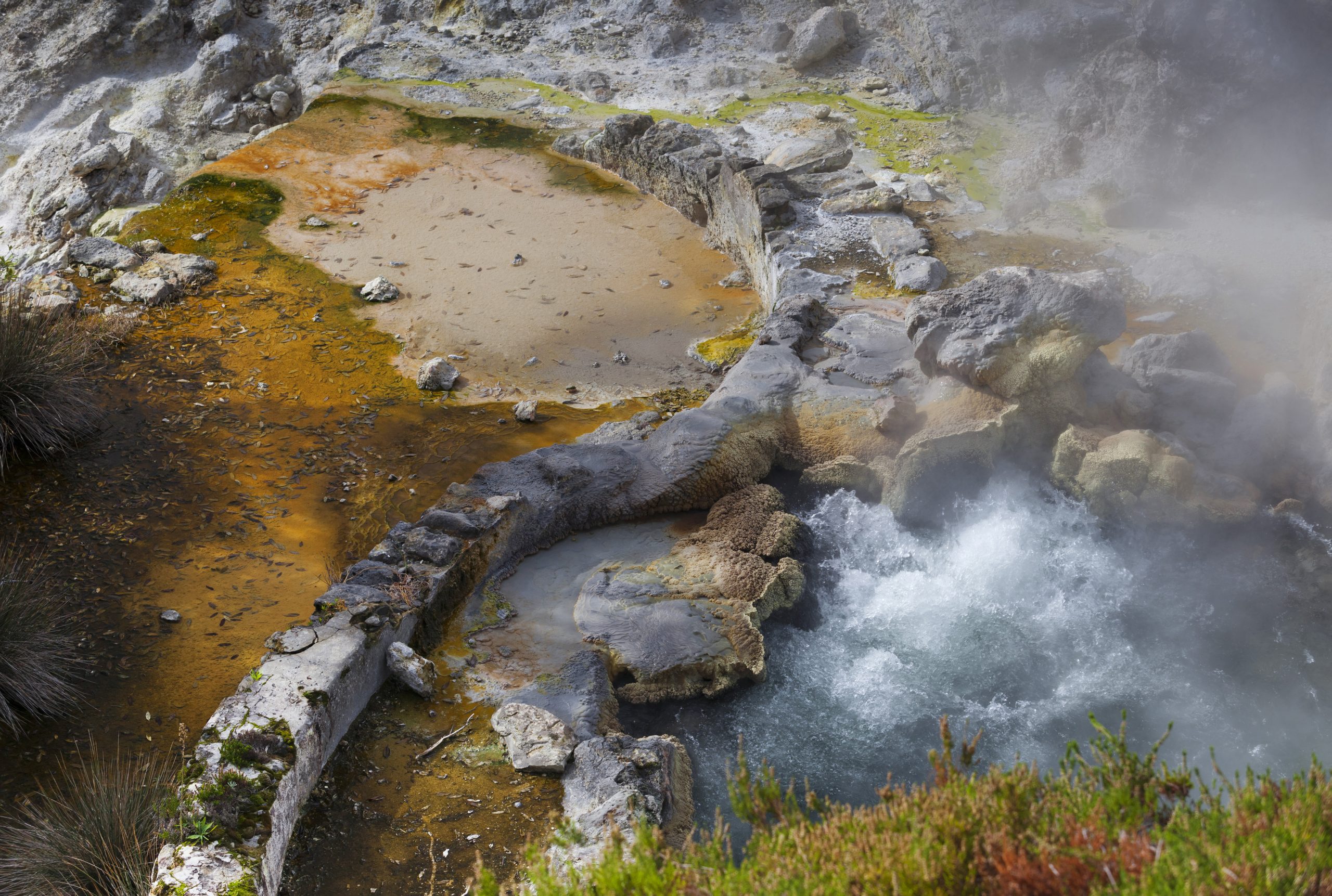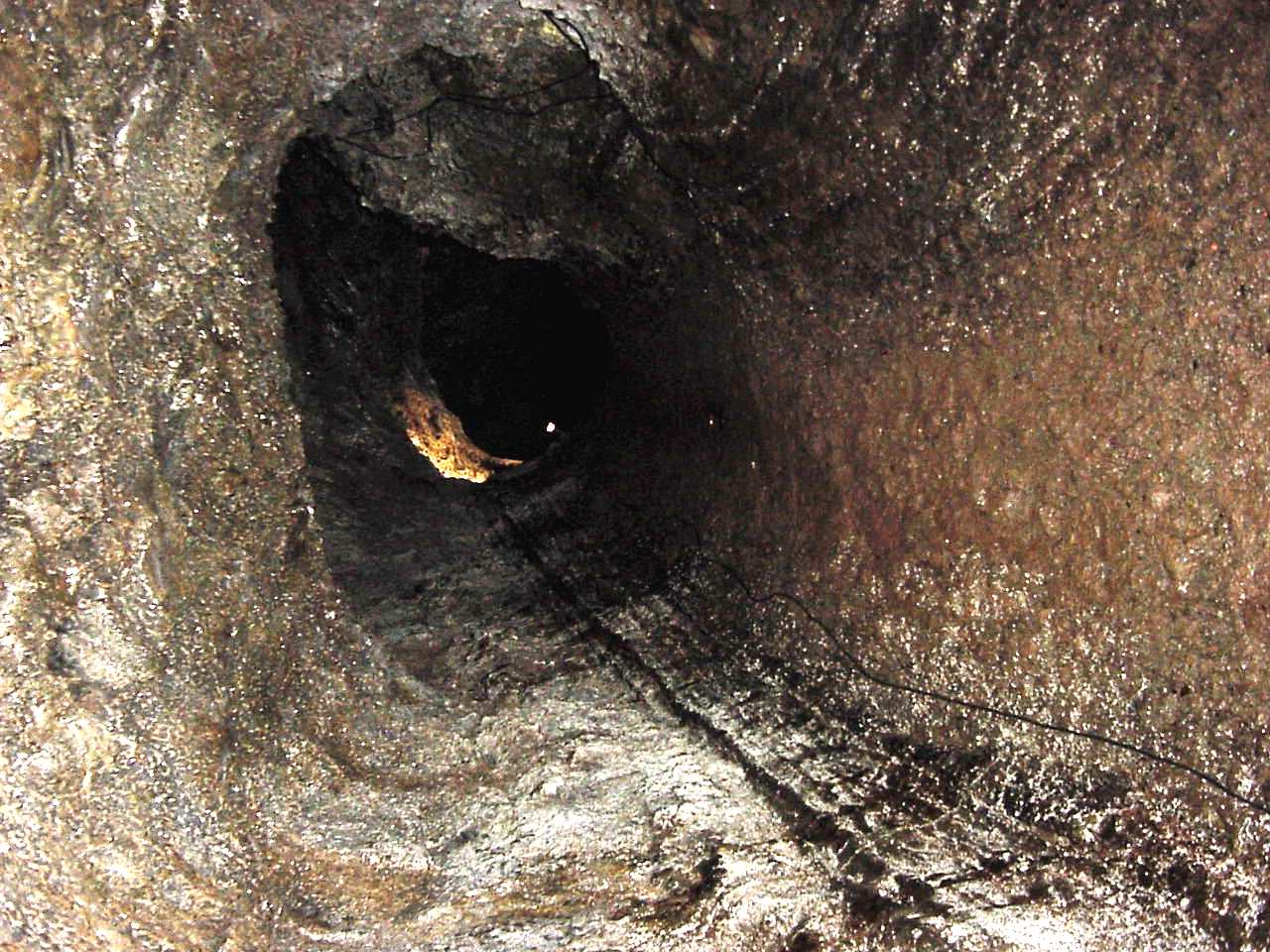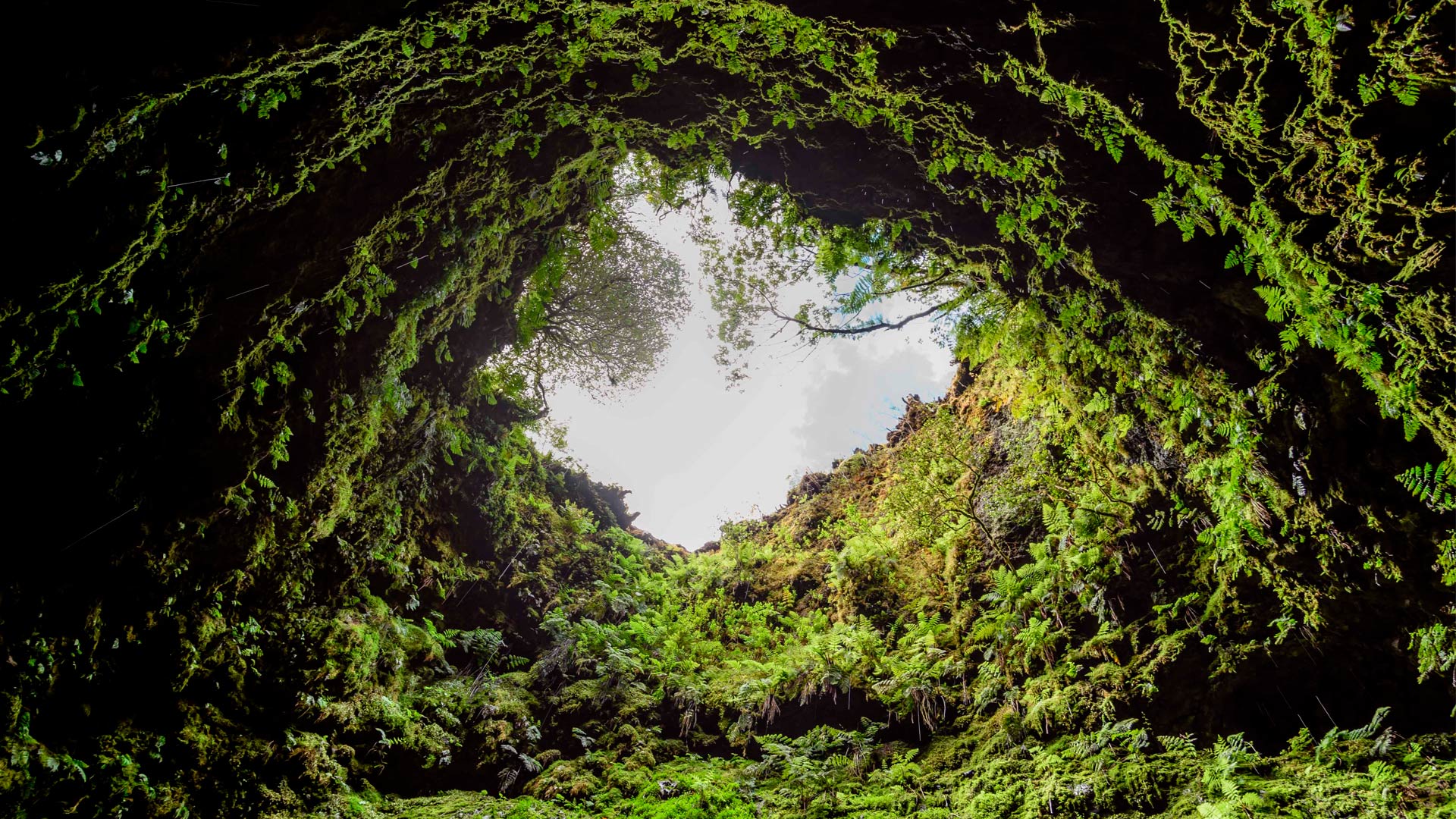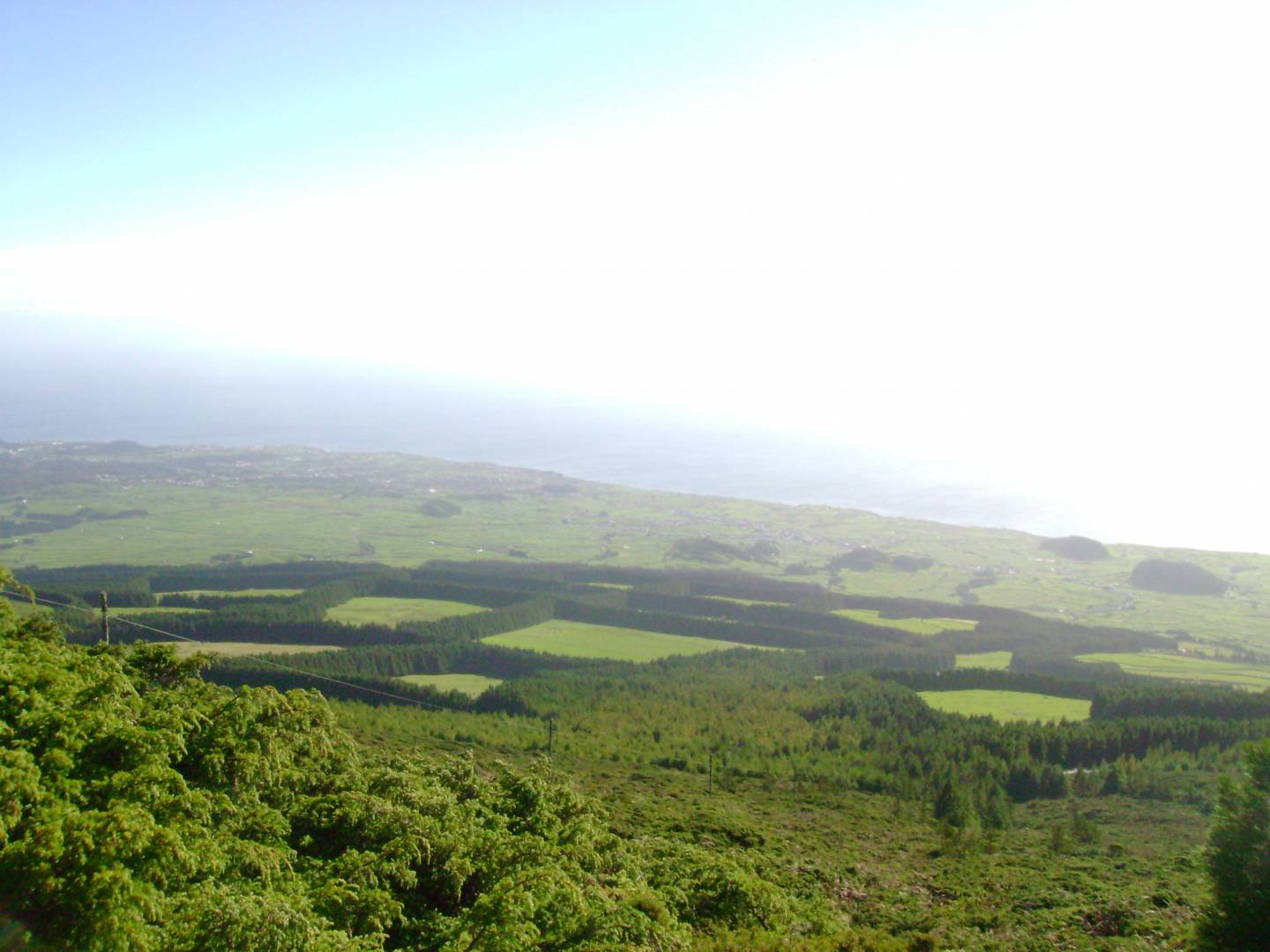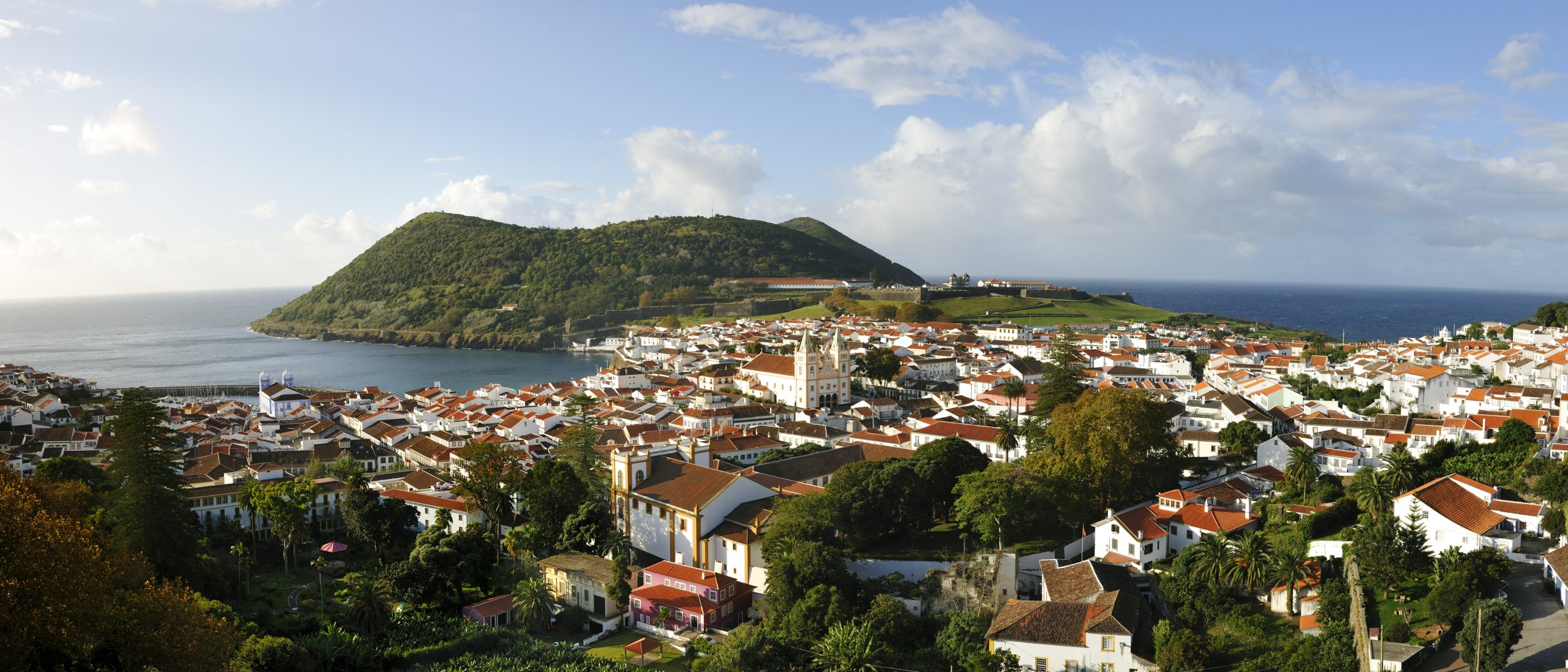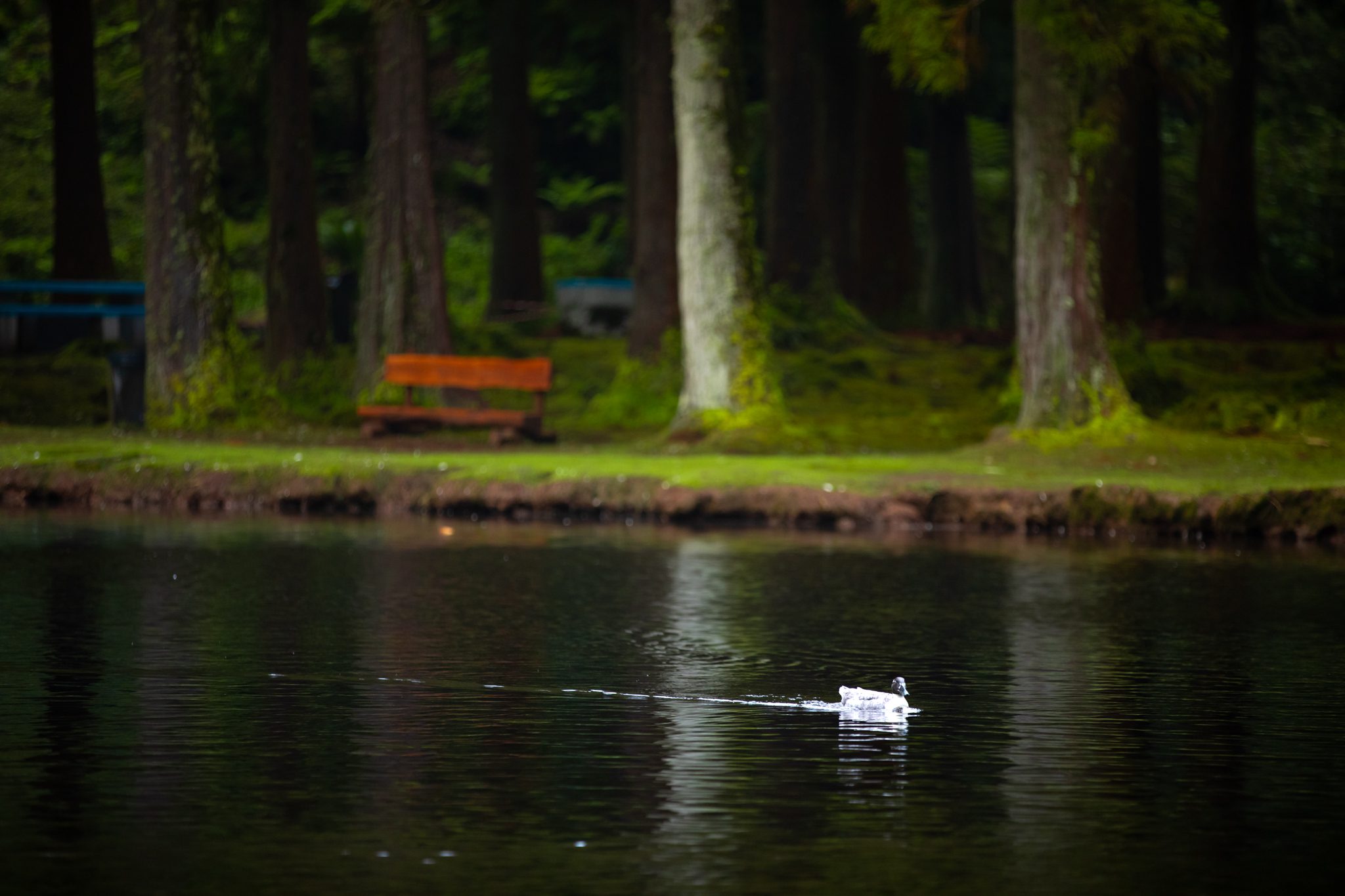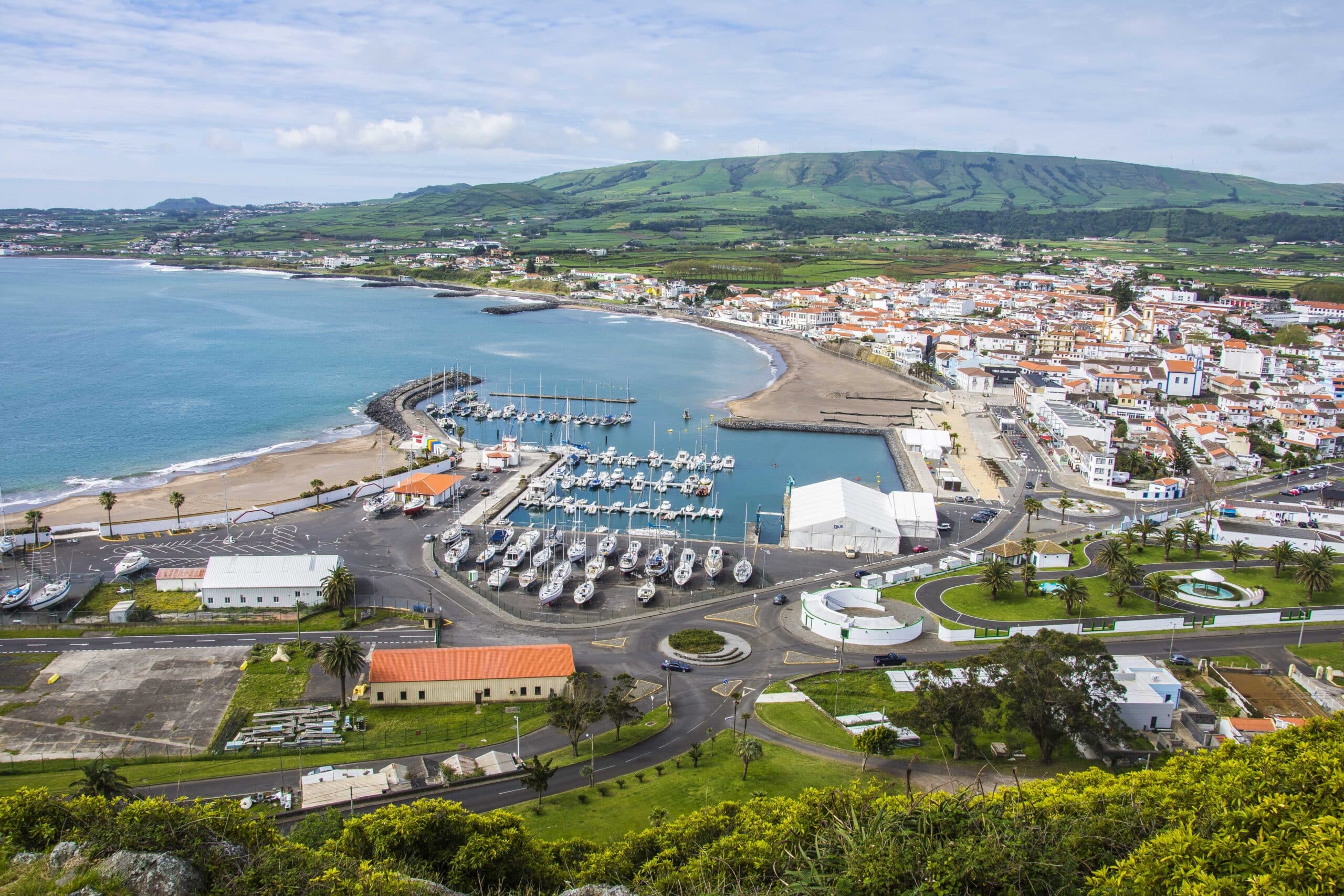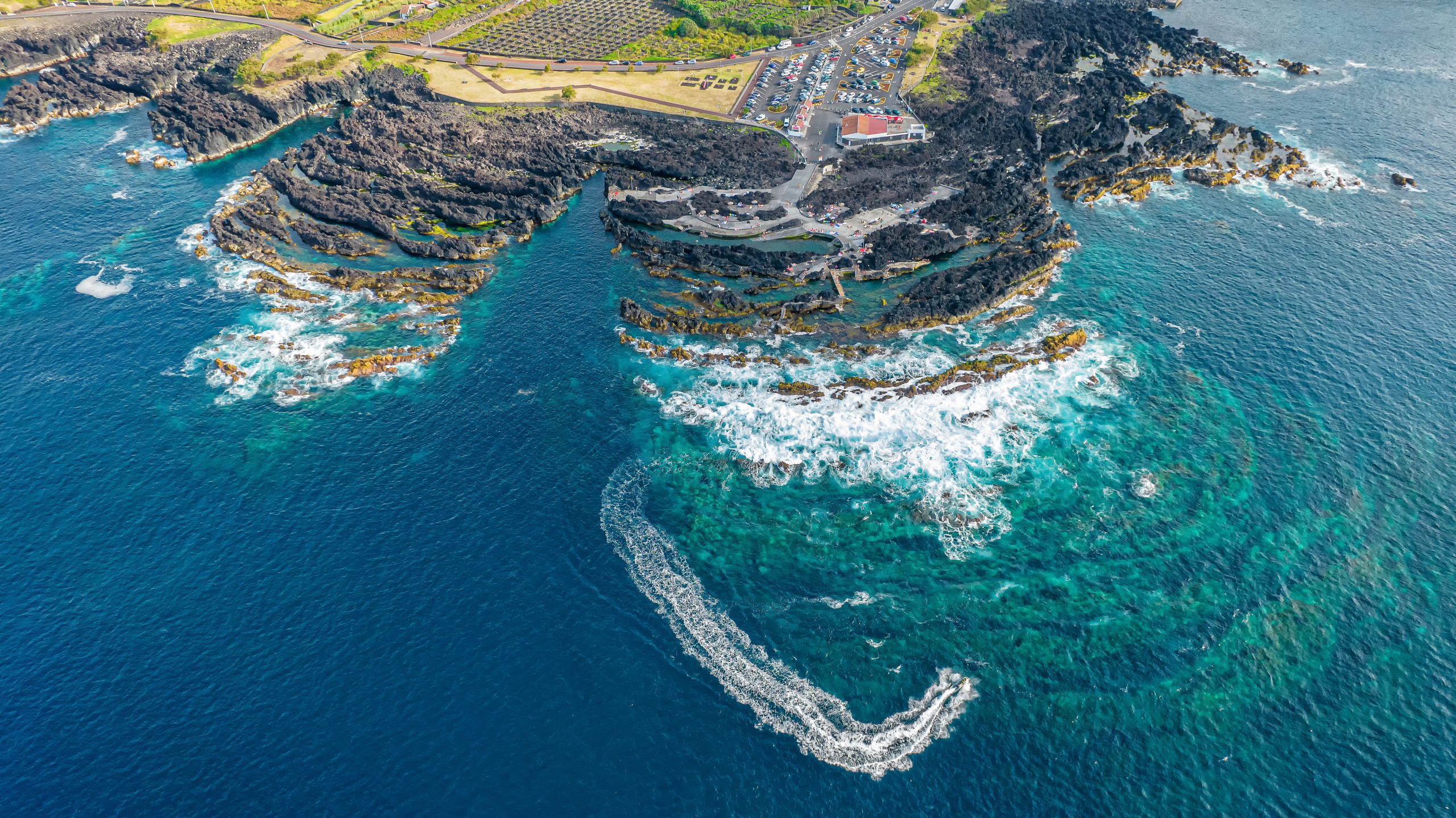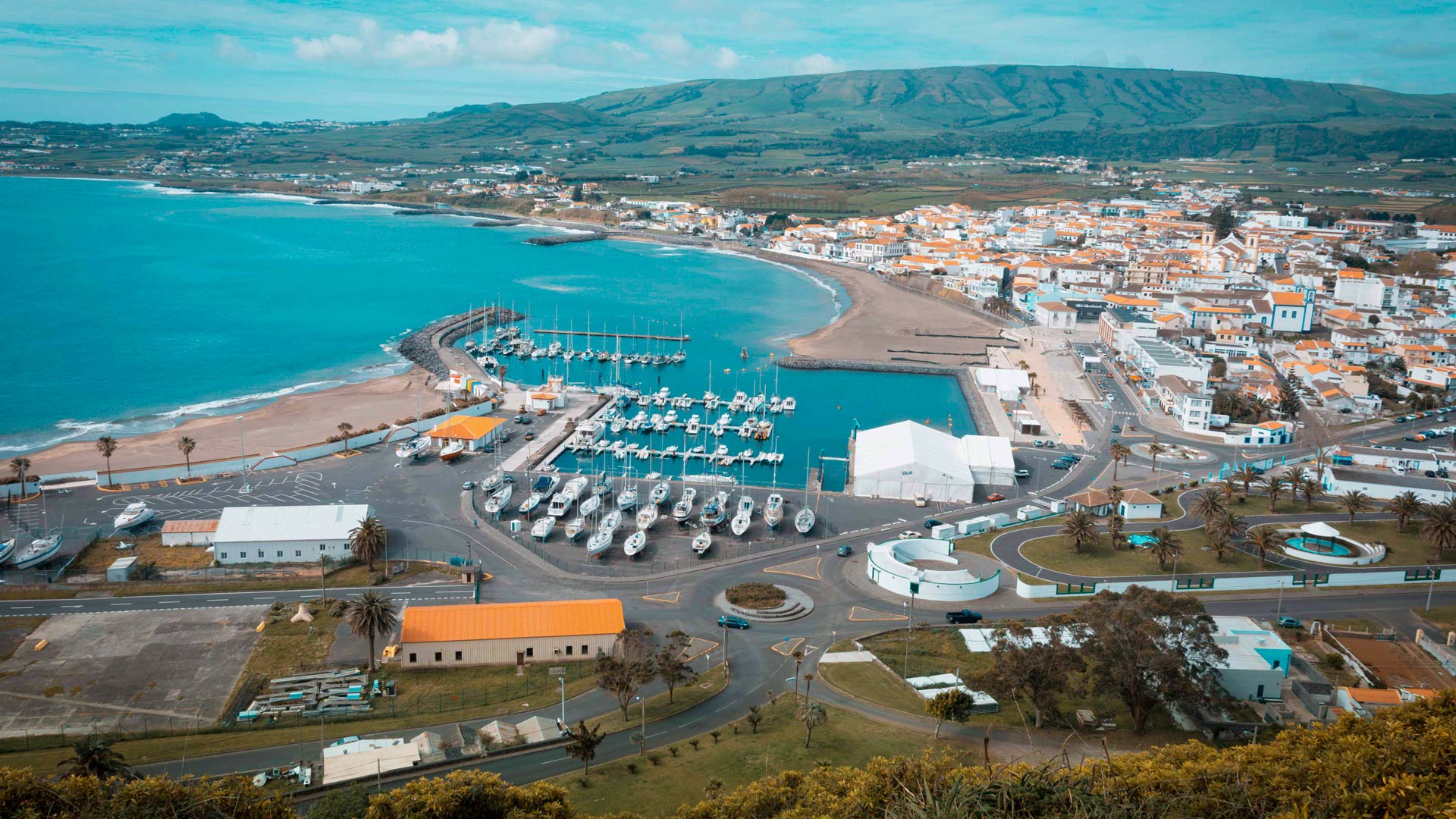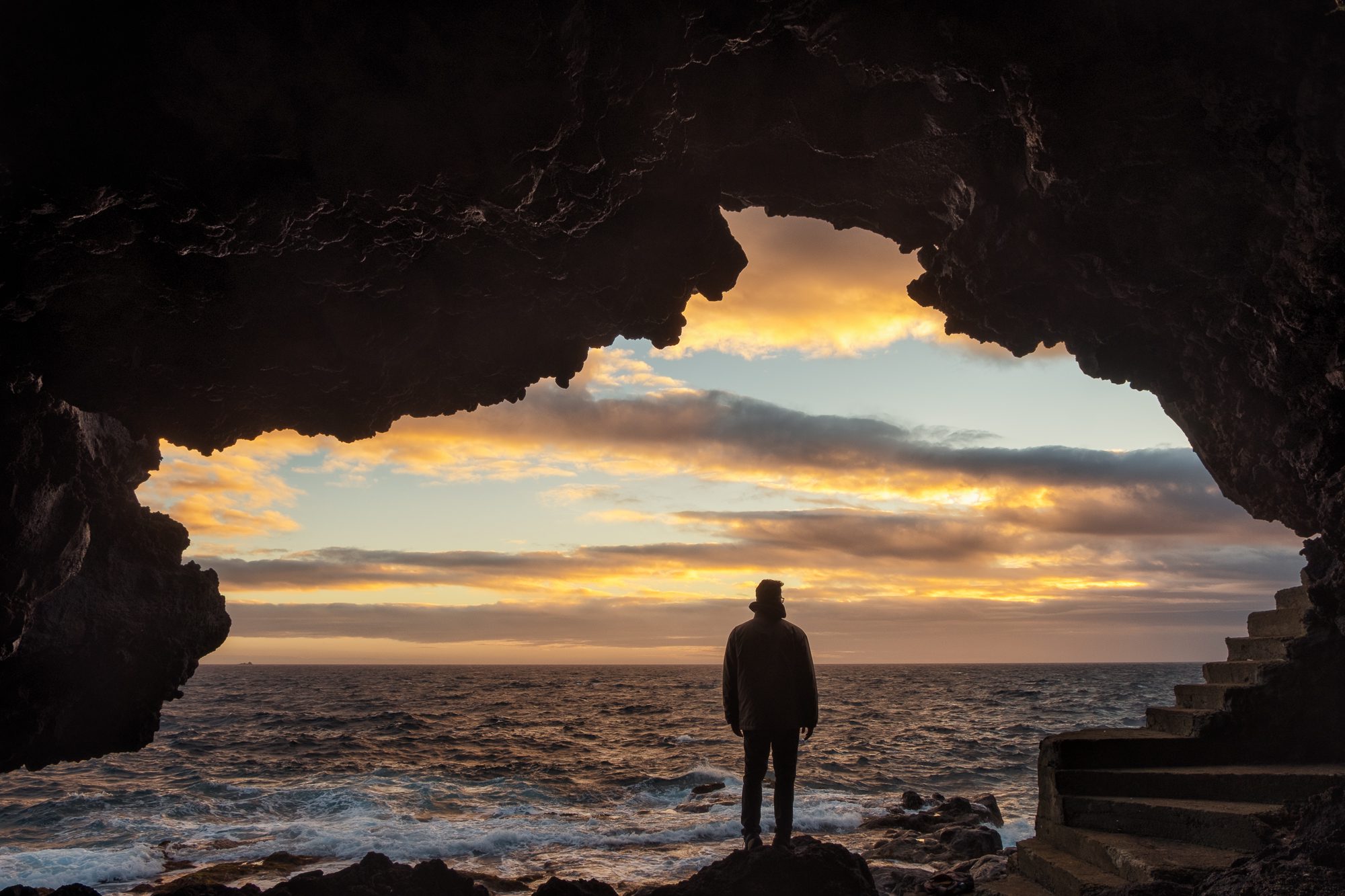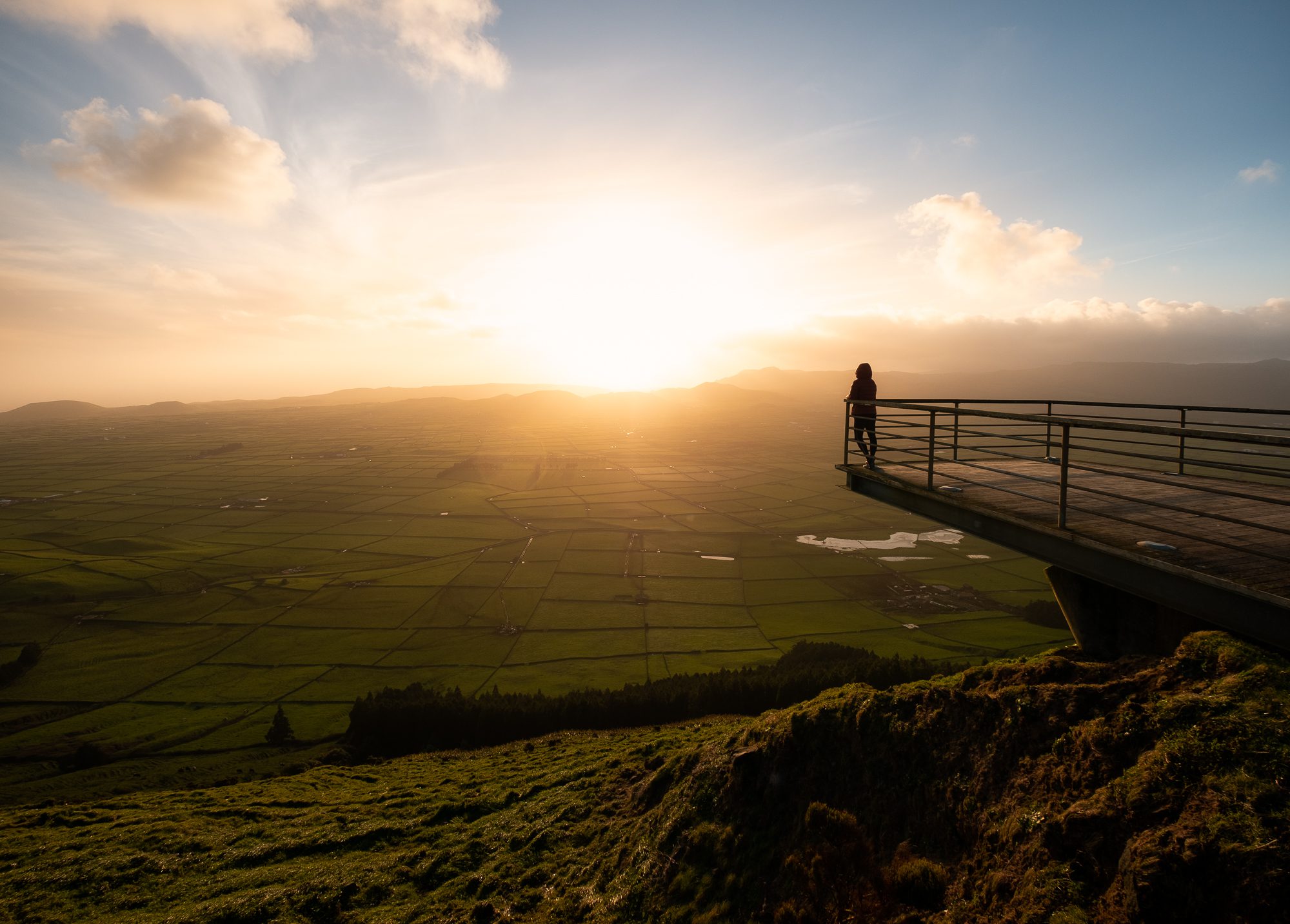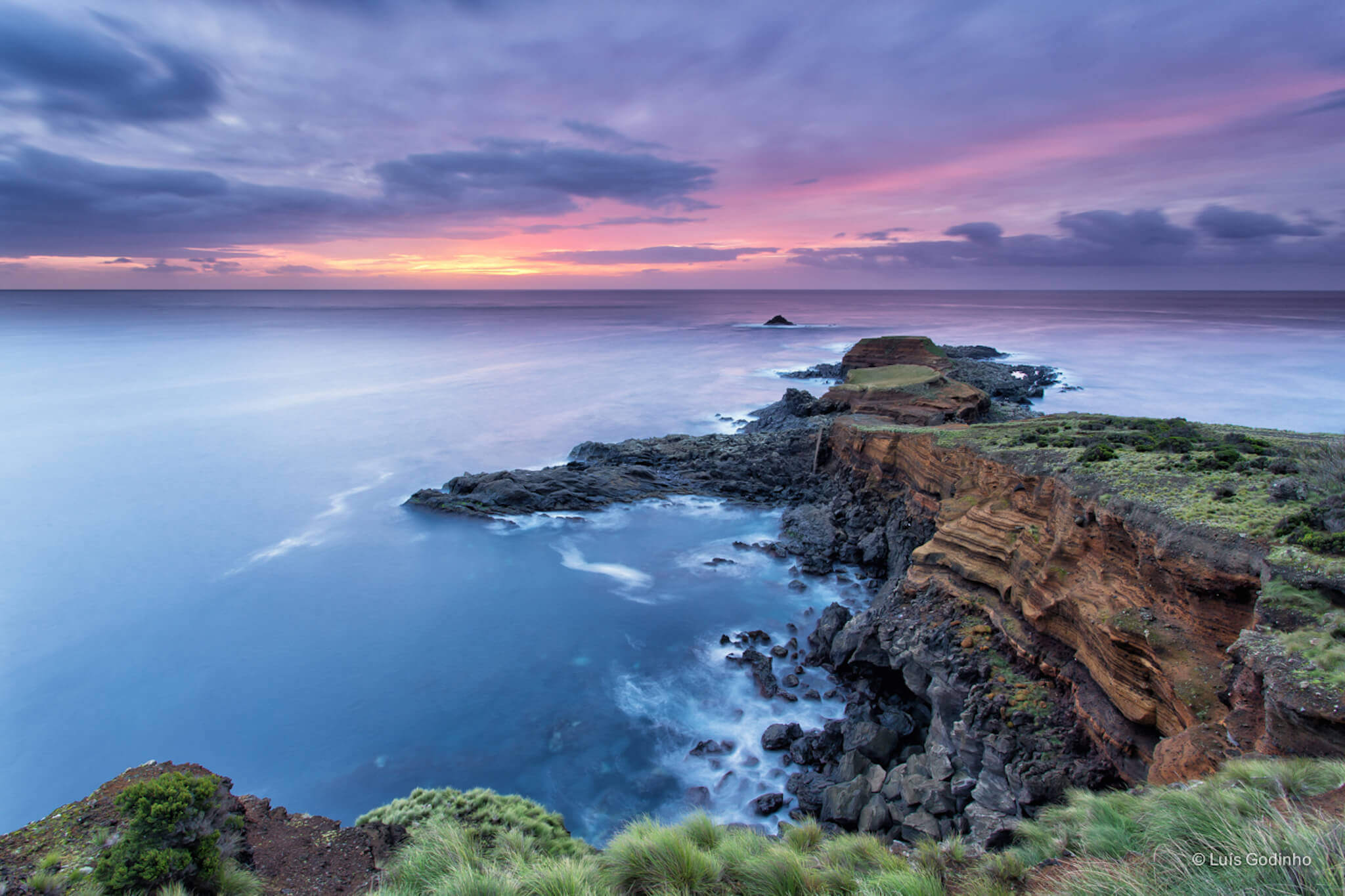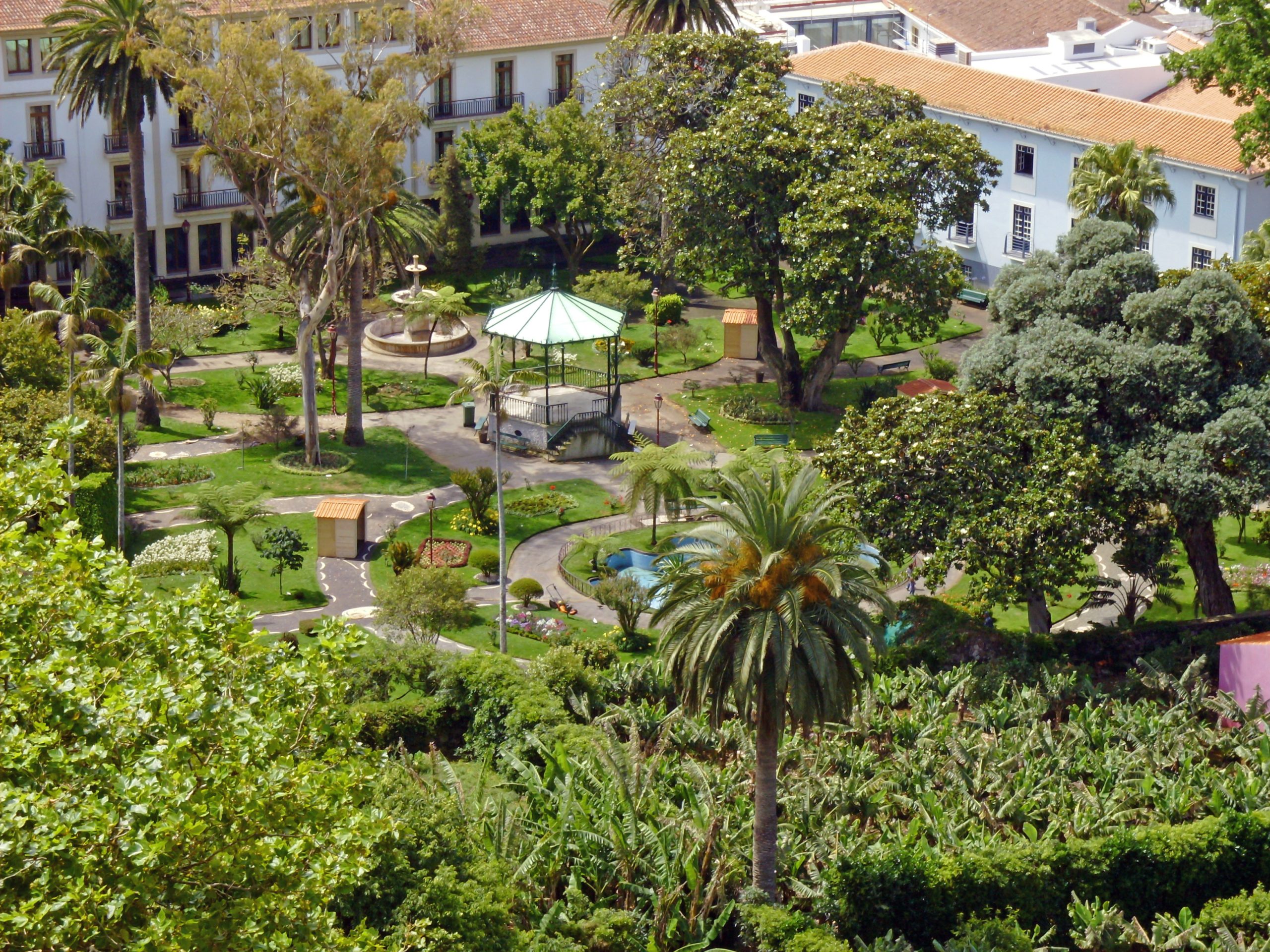Located off the southern coast of Terceira Island, near the parish of Feteira in the municipality of Angra do Heroísmo, Ilhéus das Cabras are considered the largest islets in the Azores Archipelago. Formed by submarine eruptions, these unique landforms belong to the Ilhéus das Cabras Special Protection Zone.
Its cliffs hide incredible caves that, throughout history, served as pirate refuges, strategic attack points for galleons, and stages for fights during global conflicts. Today, the islets are a natural sanctuary, serving as a nesting site for several seabird species typical of the Azores.
When visiting Terceira Island, be sure to include Ilhéus das Cabras in your itinerary. Whether you explore it from the sea on a boat tour or admire it from the parish of Feteira, this is a setting that is sure to impress.
What are Ilhéus das Cabras

Ilhéus das Cabras are the largest islet in the Azores archipelago, located off the southern coast of Terceira Island. It consists of two distinct formations — Ilhéu Pequeno and Ilhéu Grande — which rise 84 and 147 meters above sea level, respectively.
This protected natural area, part of the Ilhéus das Cabras Special Protection Zone, spans 29 hectares and holds great geological, ecological, and historical significance.
History
The islets have witnessed both natural and human history. In 1980, a significant earthquake in Angra do Heroísmo caused part of Ilhéu Pequeno to collapse, altering its shape. Local legends also recount a story of a German submarine hiding among the islets during World War II, capitalizing on the deep waters.
The name “Ilhéus das Cabras” (“Islets of the Goats” if translated) comes from a time when goats and sheep grazed the area, though the sparse vegetation offered little sustenance. For decades, the islets were used for wool production, with exports to São Jorge Island for traditional blanket weaving.
Geology
Ilhéus das Cabras was formed by intense submarine eruptions, where basaltic lava met seawater, triggering a phreatomagmatic reaction. This explosive interaction created volcanic coastal cones that later collapsed due to marine erosion and tectonic activity. Today, they remain striking geological landmarks that bear witness to Terceira’s volcanic origins.
Did you know
The rocks found here resemble palagonite, a glassy volcanic material also identified in Martian regoliths — evidence that water once existed in abundance on Mars.
Fauna
Ilhéus das Cabras are a protected natural sanctuary located off the southern coast of Terceira Island. It serves as a vital nesting ground for many seabird species, including Cory’s Shearwaters, Common Terns, Roseate Terns, Gray Herons, and Seagulls.
The surrounding marine area is equally rich in biodiversity, home to dozens of fish species, among them the majestic eagle rays that shelter in underwater caves. Visitors may also spot marine mammals, such as Harbor Porpoises, and even Sea Turtles gliding through the clear waters.
Quick Info
This area is part of the Rede Natura 2000, a European ecological network that aims to ensure the long-term survival of Europe’s most valuable and threatened species and habitats. Access to the islets is restricted and regulated, helping to protect these fragile ecosystems and preserve the unique biodiversity of the Azores.
Plan Your Visit to Ilhéus das Cabras

How to Get to Ilhéus das Cabras
Ilhéus das Cabras are located approximately 10 km from the Port of Angra do Heroísmo, near the parish of Feteira. You can reach the departure point by car, motorcycle, taxi, or bicycle via the EN1-1A road — the route recommended by Google Maps. The trip takes about 15 minutes by car, 41 minutes by bike, or 2 hours and 15 minutes on foot.
From the coast, the boat ride to the islets takes around 15 minutes, offering scenic views of the coastline and the twin volcanic formations.
Where to Eat
Click on the following link to find a place to eat near Angra do Heroísmo. It will take you to Tripadvisor, where you can review the top 10 restaurants.
Where to Stay
Searching for the perfect place to stay? We’ve made it easy by filtering top accommodation options from Airbnb, Booking, and Trivago. Here, you’ll find the ideal place to stay and enjoy your visit!
Pro Tips
- Join a guided boat tour: The best way to experience Ilhéus das Cabras is by taking a local boat tour from Angra do Heroísmo. Many tours include a close-up view of the islets and optional snorkeling stops nearby.
- Bring binoculars: The islets are an important nesting site for seabirds. Binoculars will help you observe species like Cory’s shearwaters and common terns without disturbing their habitat.
- Check the weather: Sea conditions can change quickly. Choose a calm day to ensure a smoother boat ride and better visibility for wildlife observation.
- Don’t plan to land: The islets are part of a protected nature reserve, so stepping on them is not allowed. Enjoy the experience from the boat and respect conservation efforts.
Nearby Attractions
Angra do Heroísmo

Angra do Heroísmo, the largest city on Terceira Island, enchants visitors with its stunning scenery and rich historical charm. Nestled between the sea and the iconic green peninsula of Monte Brasil, the city offers breathtaking views and a rich cultural experience. Its narrow cobbled streets, colorful houses, and unique atmosphere earned it the status of a UNESCO World Heritage Site in 1983.
Monte Brasil

Monte Brasil is a striking volcanic peninsula in Angra do Heroísmo, formed by a basaltic eruption in shallow waters. Rich in biodiversity and covered in native vegetation, it offers panoramic viewpoints, scenic hiking trails, and a glimpse into the island’s geological and historical past. Once a military stronghold, it’s now a peaceful natural haven where visitors can enjoy both land and marine life.
Jardim Duque da Terceira

Jardim Duque da Terceira is a historic botanical garden located in the center of Angra do Heroísmo. Founded in 1882, it was initially created to acclimate plant species and later named in honor of the Duke of Terceira. The garden features volcanic cobblestone paths, fascinating trees, 18th-century tile panels, and monuments, including the Alto da Memória obelisk, which offers panoramic views of the city. It’s a peaceful place that beautifully combines nature, culture, and history.
Check all our articles about each one of the most relevant points of interest on Terceira Island: Algar do Carvão | Biscoitos | Furnas do Enxofre | Gruta das Agulhas | Gruta do Natal | Ilhéus das Cabras | Jardim Duque da Terceira | Lagoa das Patas | Miradouro da Serra de Santa Bárbara | Miradouro da Serra do Cume | Monte Brasil | Ponta das Contendas | Praia da Vitória | Miradouro do Facho
Complementary Information
Best Season to Visit the Azores
The Azores Archipelago boasts a unique climate that shapes its lush landscapes, making it a splendid year-round destination. With mild temperatures and minimal fluctuations, each season offers something unique. Spring averages 16 °C, summer reaches 21 °C, autumn cools to 18 °C, and winter remains mild at 14 °C.
→ For a detailed breakdown of the weather by month, check the following links 🌤️☔️: January | February | March | April | May | June | July | August | September | October | November | December
How to Get to the Azores
The Azorean Archipelago is easily accessible through numerous flight routes. Lisbon and Porto are the main entry points to the continent, with direct flights available to São Miguel (PDL), Terceira (TER), Faial (HOR), Pico (PIX), and Santa Maria (SMA). To find the best flight, use search engines like eDreams or Skyscanner. These platforms enable you to compare prices and schedules from various airlines in one convenient location.
For more details on how to get to the Azores, take a look at our complete guide. But what if you want to explore beyond your arrival island? We’ve got you covered!
- Azores airports 🛬
- Flights between islands ✈️
- Ferries between islands ⛴️
- Which island to choose? 🏝️
- What airlines fly to the Azores? 🛩️
→ Once you’ve found the perfect route, book your tickets and get ready to experience one of the world’s most stunning island groups!
Travel Essentials
Essential Information for your Azores trip: Azorean Language & Phrases 🗣️ | Currency & Banks 💵 | Credit Cards & Traveler’s Cheques 🏧 | Driving in the Azores 🚗 | Electricity 🔌 | Experiences & Tours 🗺️ | Health & Safety 🩺 | Internet & Wi-Fi Access 🛜 | Phones & Mobile Service 📞 | Post Offices & Buying Stamps ✉️ | Public Holidays 🏖️ | Shopping 🛒 | Time & Daylight 🕒 | Whale Watching Guide 🐳 | Best Island to Visit 🏞️
Useful Tools & Apps
The weather in the Azores can be variable, so it’s helpful to use some apps before visiting the islands. Spotazores provides live camera feeds from the main tourist attractions, allowing you to check the weather and plan your visit. For accurate weather predictions, use Windy or Windguru — they provide the most reliable predictions.
Video
Conclusion
Ilhéus das Cabras are much more than just two volcanic formations off the coast of Terceira — they are a living symbol of the island’s natural heritage, geological wonder, and layered history. From dramatic caves once used by pirates to the rich biodiversity protected under European conservation efforts, these islets are a remarkable example of how nature and culture intertwine in the Azores.
Whether you choose to admire them from afar or sail close on a boat tour, Ilhéus das Cabras promise an unforgettable glimpse into the wild, volcanic beauty of Terceira Island.
Authors’ Note
I am pleased to inform you that all the recommendations in this article are based on my personal experience and observations. As the author, I have personally visited each attraction mentioned, ensuring that every suggestion is grounded in first-hand knowledge and genuine enthusiasm.
Photo Gallery





FAQs
No, landing on Ilhéus das Cabras is prohibited, as it is part of a protected nature reserve. However, you can visit the islets by boat and admire them from the sea.
You can reach the islets on a guided boat tour, usually departing from Angra do Heroísmo. These tours often include sightseeing, wildlife observation, and sometimes snorkeling near the islets.
Legend has it that early settlers left goats on the islets, giving rise to the name. While there are no goats today, the name has endured through local tradition.
The islets are home to seabirds like Cory’s shearwaters and common terns. The surrounding waters are teeming with marine life, making it an ideal spot for snorkeling and wildlife observation.






